Write down the four 4 nonlinear regression models covered in
Solution
Nonlinear regression is a statistical technique that helps describe nonlinear relationships in experimental data. A nonlinear regression model can be written Yn = f(xn, ) + Zn where f is the expectation function and xn is a vector of associated regressor variables or independent variables for the nth case.
A nonlinear model is one in which at least one of the parameters appears nonlinearly. More formally, in a nonlinear model, at least one derivative with respect to a parameter should involve that parameter. Examples of a nonlinear model are:
Y(t) = exp(at+bt2)
Y(t) = at + exp(-bt).
Important non linear growth models
1.Logistic Model
This model is represented by the differential equation
dN/dt = rN (1-N/K).
Integrating, we get
N(t) = K / [1+(K/No-1) exp(-rt)]
The graph of N(t) versus t is elongated S-shaped and the curve is symmetrical about its point of inflexion.
2.Malthus Model
If N(t) denotes the population size or biomass at time t and r is the intrinsic growth rate, then the rate of growth of population size is given by
dN/dt = rN.
Integrating, we get
N(t) = No exp (rt),
where No denotes the population size at t=0. Thus this law entails an exponential increase for r>0. Furthermore, N(t) à as t à , which cannot happen in reality.
3. Monomolecular Model
This model describes the progress of a growth situation in which it is believed that the rate of growth at any time is proportional to the resources yet to be achieved, i.e.
dN/dt = r(K-N),
where K is the carrying size of the system. Integrating (3.3), we get
N(t) = K-(K-No) exp (-rt).
4. Richards Model.
This model is given by dN/dt = rN (KN – Nm)/mKm which, on integration, gives N(t )=K N0 /[ N0+ (KN – N0m) exp (-rt)]1/m.
Unlike the earlier models, this model has four parameters
Hours (H)
10
20
40
50
No fo bacteria (N)
25
70
380
550
610
b)
N = b H m
Log10 N = logb + mLog10H (below data are tabulated in excel)
xi
Log10N
1
1.301
1.4771
1.6021
1.699
7.079181246
xi
yi
Log10H
1.3979
1.8451
2.5798
2.7404
2.7853
11.34851417
yi
xi.yi
1.3979
2.4005
3.8107
4.3902
4.7322
16.73153836
xiyi
(xi)^2
1
1.6927
2.1819
2.5666
2.8865
10.32766154
(xi)^2
m=2.18
= -0.815 => b=0.153
N= 0.153H2.18
%// Define points
X = [10 20 30 40 50];
Y = [ 25 70 380 550 610];
Nonlinear regression is a statistical technique that helps describe nonlinear relationships in experimental data. A nonlinear regression model can be written Yn = f(xn, ) + Zn where f is the expectation function and xn is a vector of associated regressor variables or independent variables for the nth case.
A nonlinear model is one in which at least one of the parameters appears nonlinearly. More formally, in a nonlinear model, at least one derivative with respect to a parameter should involve that parameter. Examples of a nonlinear model are:
Y(t) = exp(at+bt2)
Y(t) = at + exp(-bt).
Important non linear growth models
1.Logistic Model
This model is represented by the differential equation
dN/dt = rN (1-N/K).
Integrating, we get
N(t) = K / [1+(K/No-1) exp(-rt)]
The graph of N(t) versus t is elongated S-shaped and the curve is symmetrical about its point of inflexion.
2.Malthus Model
If N(t) denotes the population size or biomass at time t and r is the intrinsic growth rate, then the rate of growth of population size is given by
dN/dt = rN.
Integrating, we get
N(t) = No exp (rt),
where No denotes the population size at t=0. Thus this law entails an exponential increase for r>0. Furthermore, N(t) à as t à , which cannot happen in reality.
3. Monomolecular Model
This model describes the progress of a growth situation in which it is believed that the rate of growth at any time is proportional to the resources yet to be achieved, i.e.
dN/dt = r(K-N),
where K is the carrying size of the system. Integrating (3.3), we get
N(t) = K-(K-No) exp (-rt).
4. Richards Model.
This model is given by dN/dt = rN (KN – Nm)/mKm which, on integration, gives N(t )=K N0 /[ N0+ (KN – N0m) exp (-rt)]1/m.
Unlike the earlier models, this model has four parameters
Hours (H)
10
20
40
50
No fo bacteria (N)
25
70
380
550
610
b)
N = b H m
Log10 N = logb + mLog10H (below data are tabulated in excel)
xi
Log10N
1
1.301
1.4771
1.6021
1.699
7.079181246=
xi
yi
Log10H
1.3979
1.8451
2.5798
2.7404
2.7853
11.34851417=
yi
xi.yi
1.3979
2.4005
3.8107
4.3902
4.7322
16.73153836
xiyi
(xi)^2
1
1.6927
2.1819
2.5666
2.8865
10.32766154
(xi)^2
m=(nxiyi-xiyi)/(n(xi)^2-(xi)^2)
m=2.18
= -0.815 => b=0.153
N= 0.153H2.18
%// Define points
X = [10 20 30 40 50];
Y = [ 25 70 380 550 610];
| Hours (H) | 10 | 20 | 40 | 50 | |
| No fo bacteria (N) | 25 | 70 | 380 | 550 | 610 |
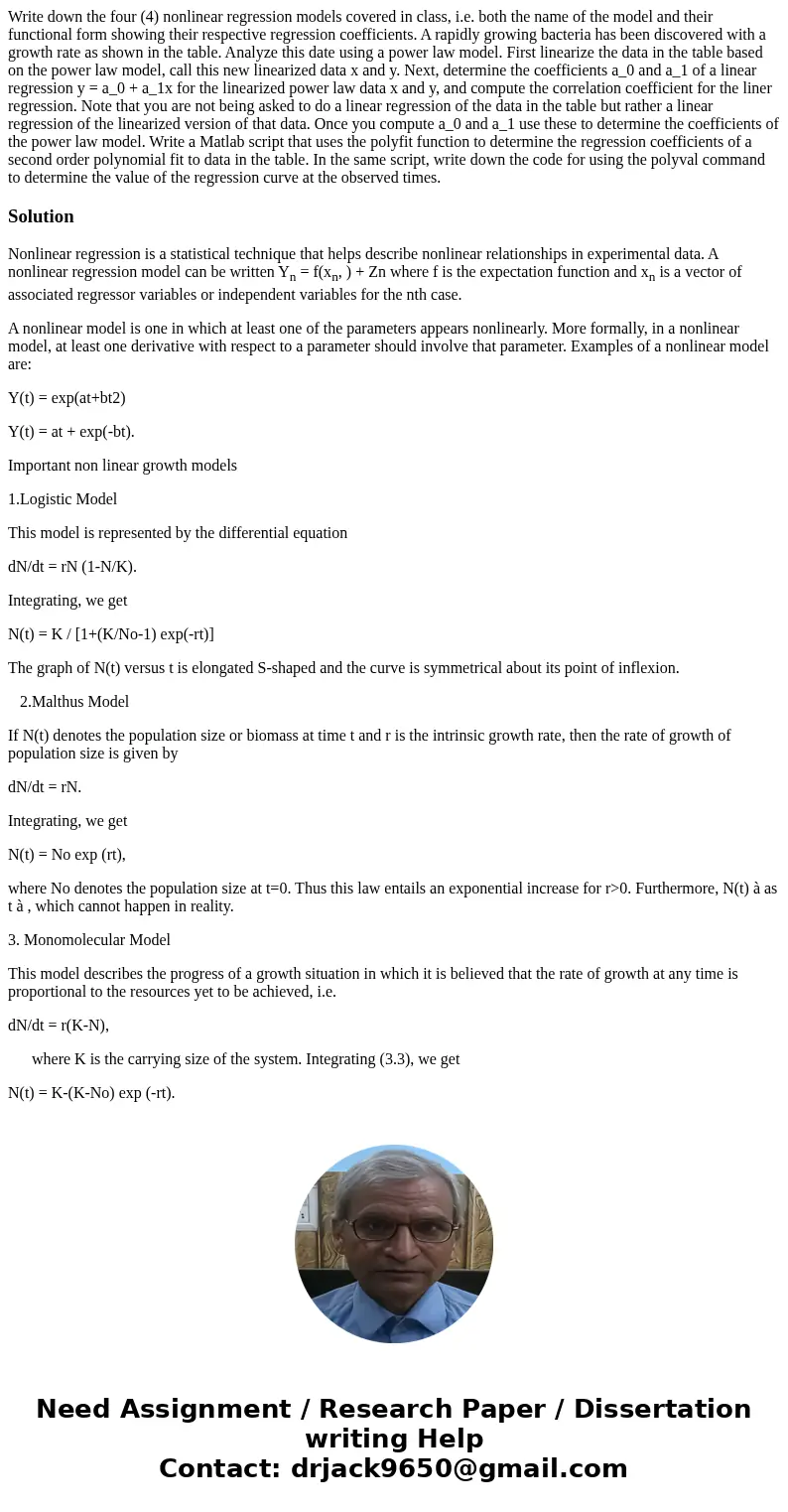
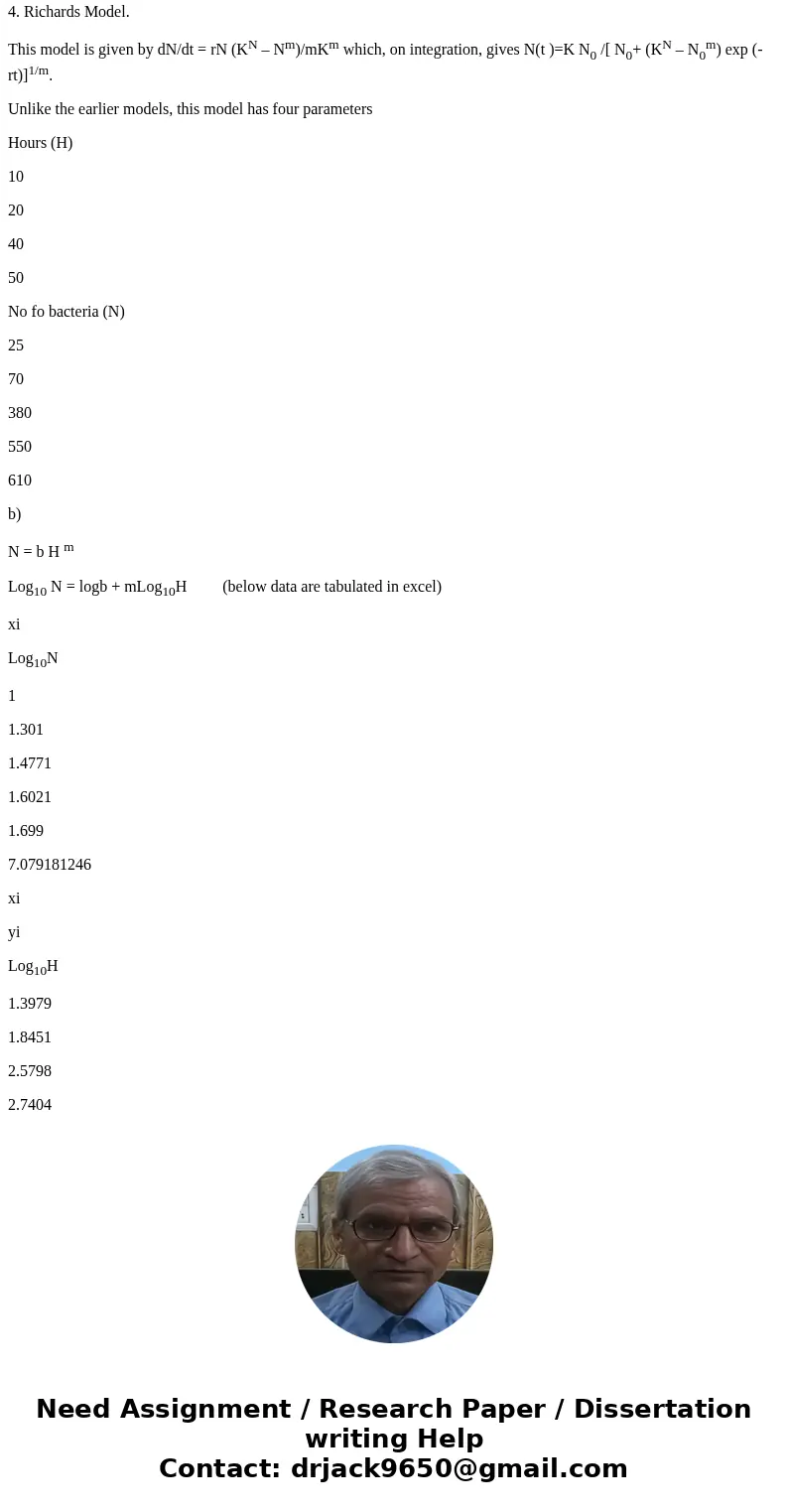
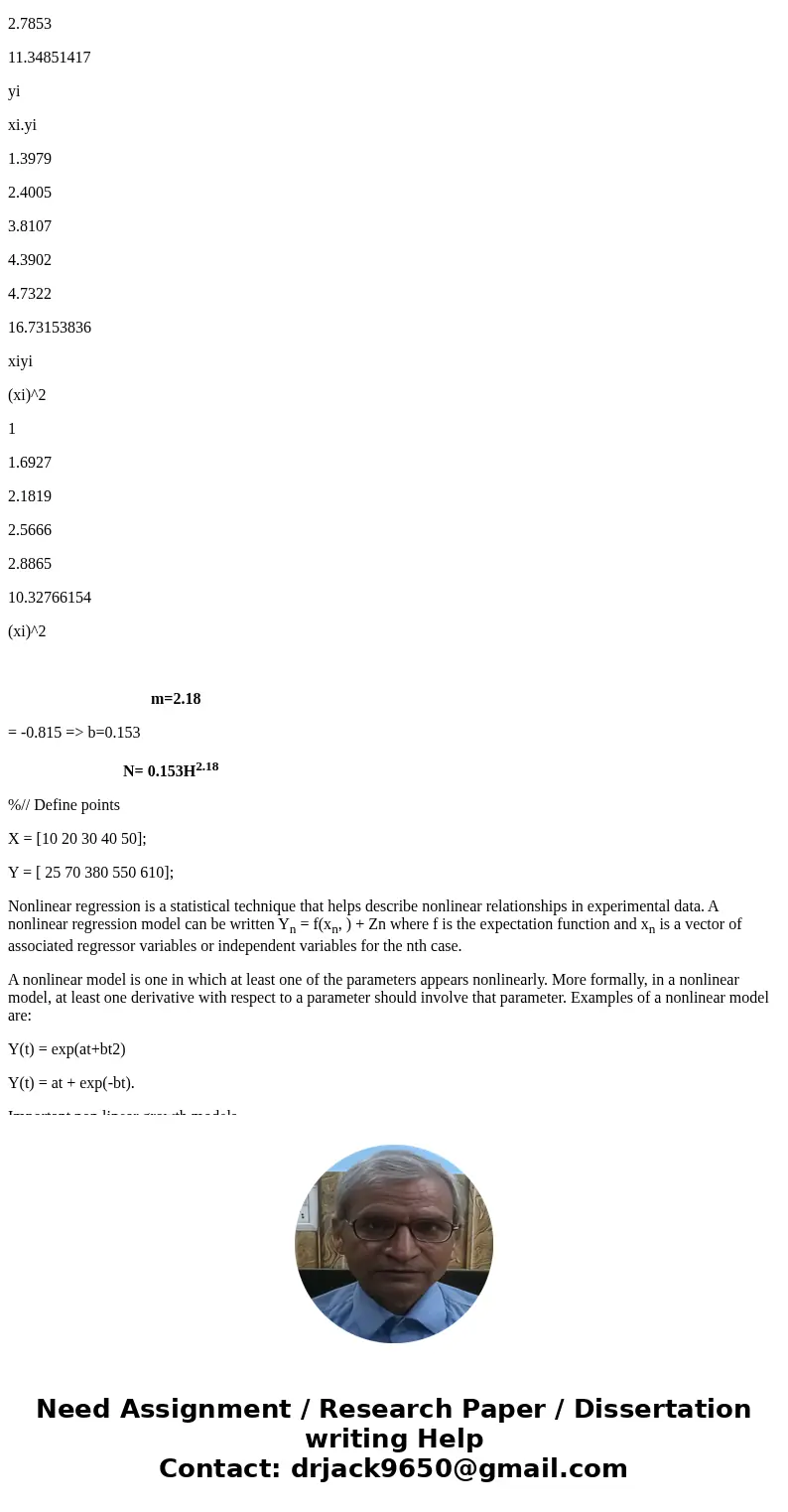
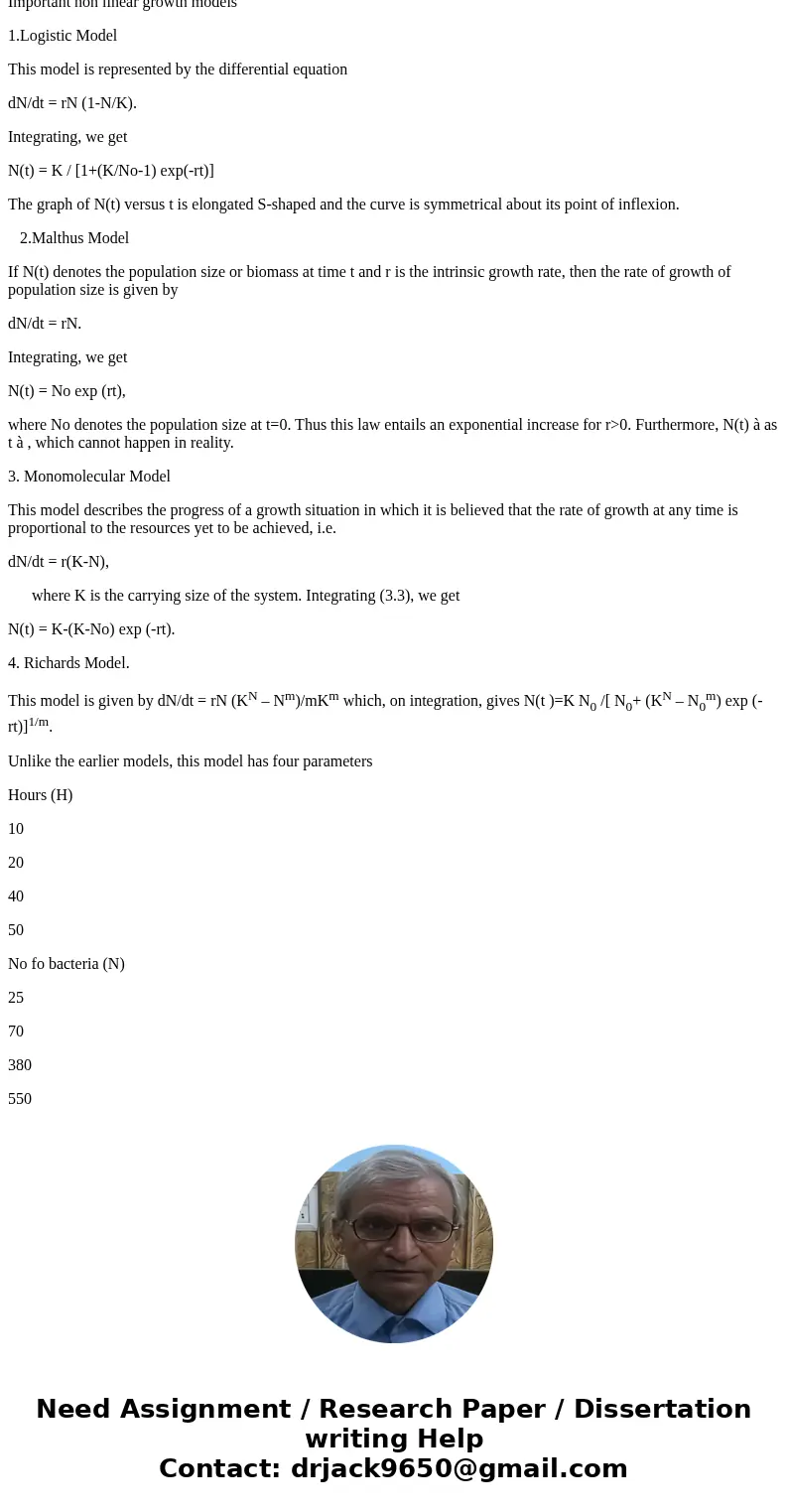
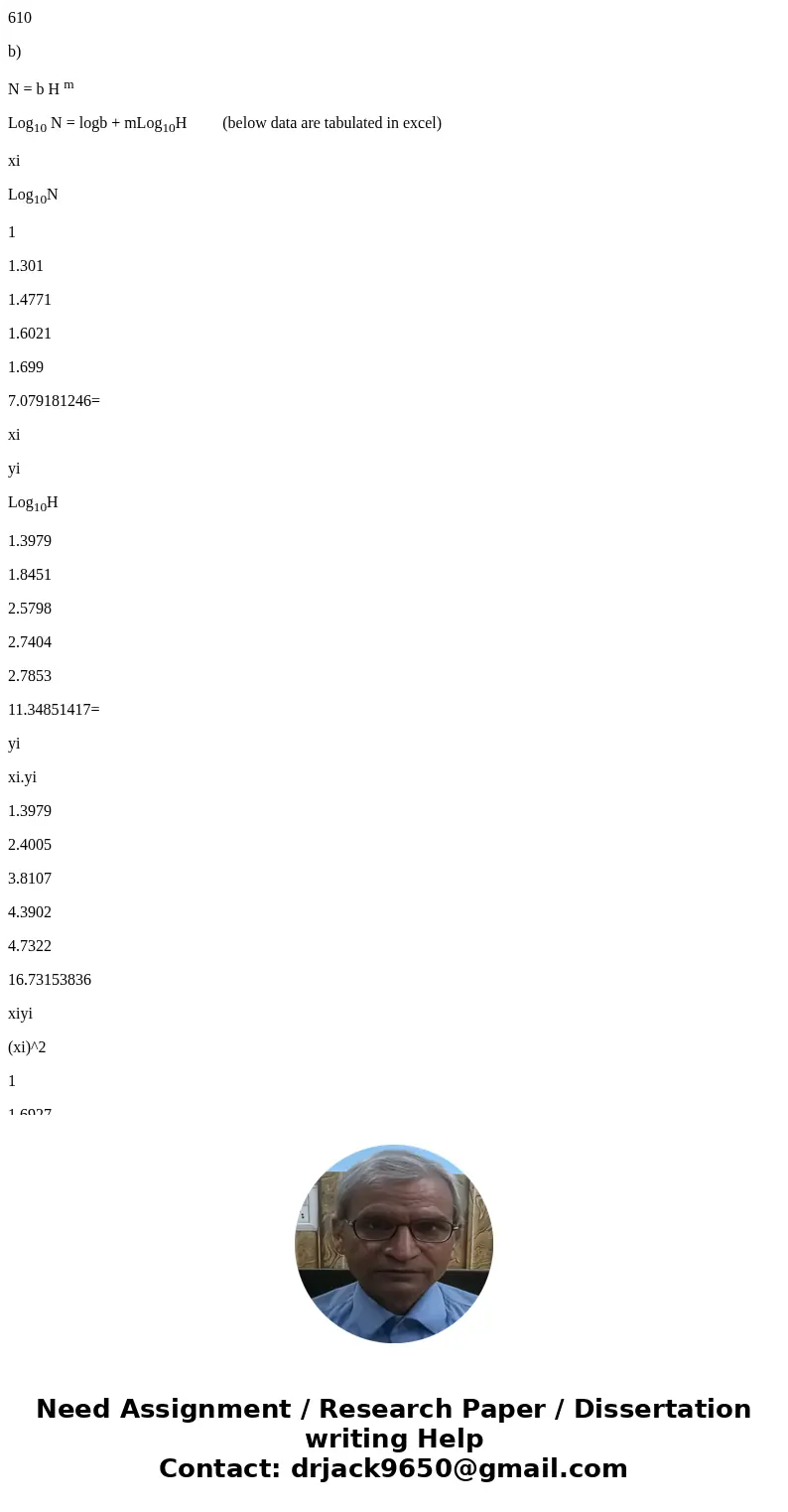
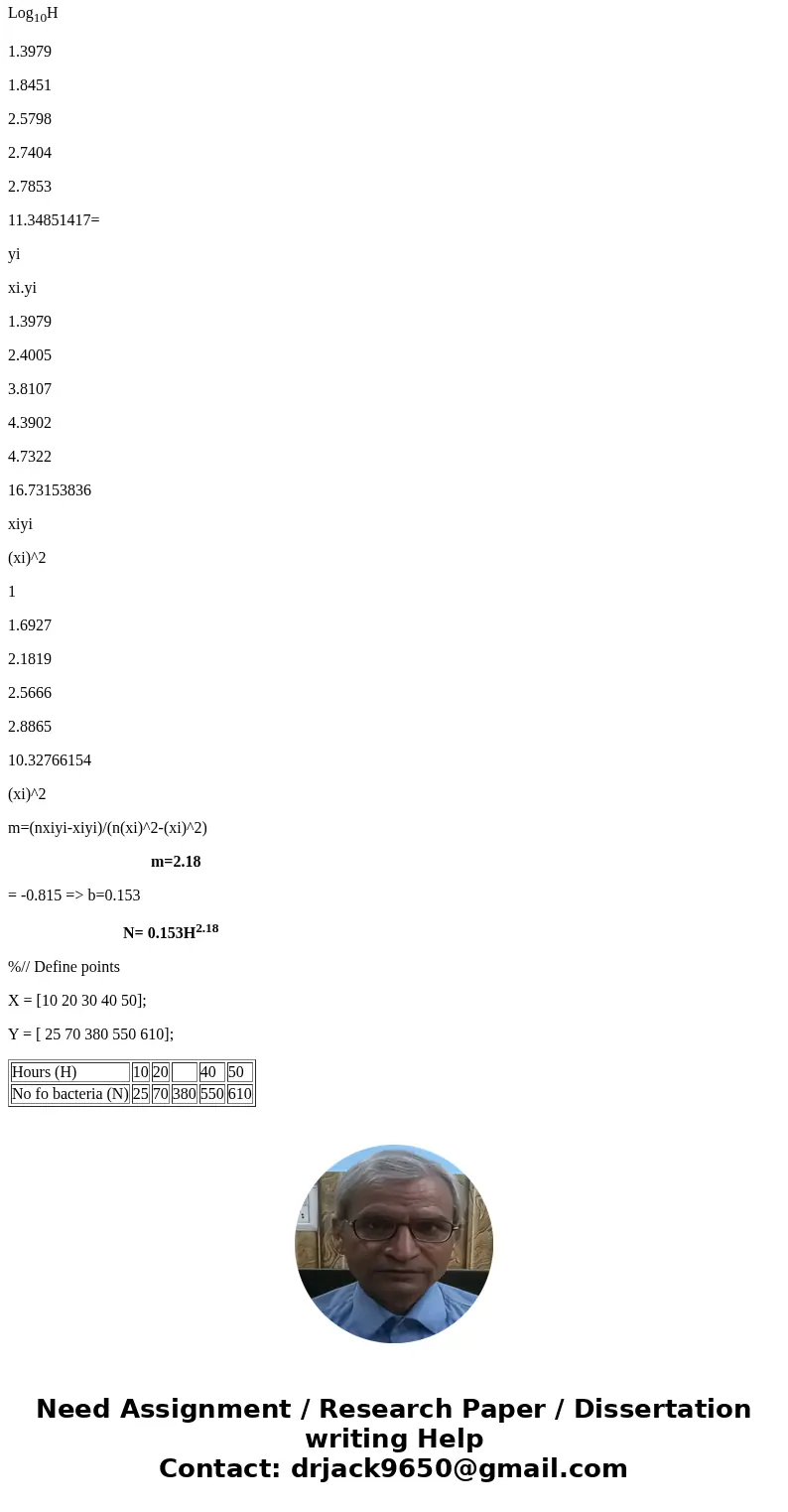
 Homework Sourse
Homework Sourse